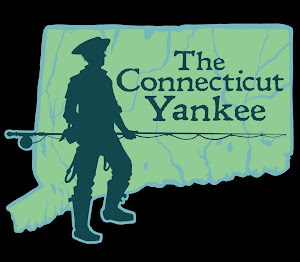Connecticut anglers have been down this road before and it's time to make some noise again.
Governor Malloy's new budget includes a proposal to close the Kensington State Fish Hatchery in
Berlin to save $196,000 a year. The argument against this is simple: the
recreational revenue generated from fishing throughout Connecticut is significant and the value from fish stockings and unique
programs that the Kensington Hatchery supports far outweighs the cost of
keeping it open and fully staffed.
Kensington Hatchery is unique because it is responsible
for all of Connecticut's seeforellen brown trout, a special strain of
trout that grow exceptionally large. In fact, a 19-pound seeforellen trout
raised in the Kensington Hatchery was recently caught in Connecticut’s West Hill Pond and is now the new brown trout state record. These fish are extremely popular
and it just so happens that Kensington Hatchery has the only
disease-free stock of seeforellens left in the nation. Shutting it down would mean losing
the seeforellen strain in Connecticut waters and tossing years of hard work out the
window.
 |
| Kensington Hatchery employees stocking huge seeforellen brown trout (photo credit: CT DEEP). |
Altogether the Kensington Hatchery produces approximately 50,000
catchable size trout and 700 surplus broodstock trout annually that are stocked
in our most important trout waters. In addition, 250,000 of its trout fry and
parr are used annually in programs to enhance sea run trout and wild
trout populations.
But this is not just about trout. Approximately 2,000
broodstock Atlantic salmon are produced at Kensington Hatchery and stocked annually
into the Naugatuck and Shetucket Rivers, as well as a handful of lakes and ponds.
Connecticut’s broodstock salmon fishery is quite popular and attracts
anglers from around the Northeast. In fact, it is estimated that Connecticut's
Atlantic salmon fishery is responsible for 5,000 – 7,000 trips per year and
those anglers spend a combined $500,000 doing so. If Kensington closes
there will be no more broodstock salmon stocked in Connecticut waterways!
 |
| What it's all about! A young angler with a salmon raised at Kensignton Hatchery (photo credit: Bill Smyrnow) |
Furthermore, more than 500 student classrooms throughout
the state are currently part of either Salmon in the Classroom or Trout in the
Classroom programs. These are highly educational and beneficial programs that
are run and funded through volunteer cooperation, teachers and students, and CT
DEEP, which provides eggs for these programs from the Kensington Hatchery. Educational
programs such as these should be encouraged and increased rather than eliminated.
The figures below speak for themselves:
- 251,000 state residents take 5.4 million fishing trips and spend $198 million per year.
- 51,000 non-residents take 457,000 fishing trips and spend $45 million per year in CT.
- Recreational fishing supports over 4,400 jobs in CT.
- Trout are the most sought after gamefish species in Connecticut attracting approximately 2.1 million fishing trips per year and generating ~$50 million per year in annual expenditures having a net economic impact of $67.5 million per year.
- Approximately $2.8 million in annual license revenue is generated by trout anglers in Connecticut.
- Approximately 100 lakes and ponds and over 200 rivers and streams are stocked annually with trout.
- The overall benefit to cost ratio for Connecticut’s Trout Program is 25 to 1.
 |
| A beautiful seeforellen brown trout raised at Kensington Hatchery (photo credit: CT DEEP) |










































